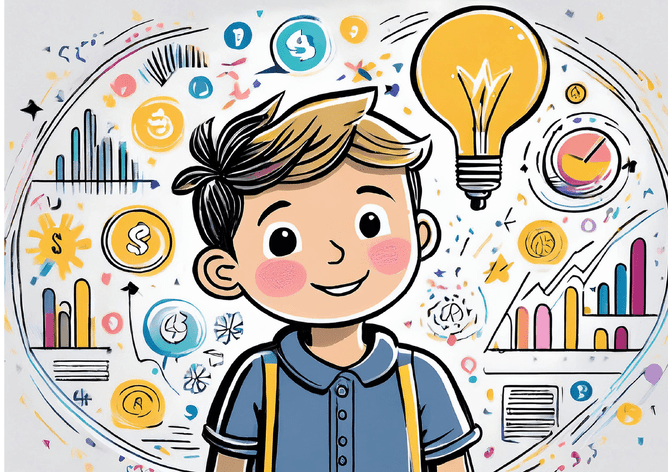The Role of Creativity in Entrepreneurship and How The DREAM Workbook Fosters It
Creativity is often hailed as the lifeblood of entrepreneurship. It's the driving force that allows entrepreneurs to envision new ideas, solve problems uniquely, and differentiate themselves in a crowded marketplace. In cultivating the next generation of innovators, The DREAM Workbook plays a crucial role by fostering creativity among young learners. Here’s a look at why creativity is essential in entrepreneurship and how our workbook helps nurture this vital skill.
Creativity: The Entrepreneur’s Key Ingredient
Entrepreneurs are frequently faced with challenges that require non-traditional solutions. Creativity enables them to see beyond conventional methods and develop innovations that bring about real change. It’s not just about coming up with new ideas; it’s about reimagining existing ones and finding ways to improve efficiency, cost-effectiveness, or user experience.
Innovative Problem Solving
At the heart of any successful business is the ability to solve problems. Creativity pushes entrepreneurs to think outside the box and devise innovative solutions to complex issues. This skill is indispensable when the market shifts or new challenges arise, allowing business owners to adapt and thrive under changing conditions.
Differentiation in the Market
In today's competitive business environment, standing out is more important than ever. Creativity helps entrepreneurs develop unique products, services, and marketing strategies that set them apart from the competition. This uniqueness can be a major factor in attracting and retaining customers.
How The DREAM Workbook Encourages Creativity
1. Idea Generation Activities
The DREAM Workbook includes numerous activities that prompt young learners to brainstorm various business ideas based on their interests and passions. These activities encourage kids to think widely and deeply, considering all possibilities without the constraints of "right" or "wrong" answers.
2. Problem Identification and Solution Crafting
Children are taught to identify problems in their surroundings and think creatively about solutions. The workbook guides them through the process of recognising everyday challenges and imagining practical solutions, cultivating a mindset that views problems as opportunities for innovation.
3. Project-Based Learning
Each section of the workbook is designed as a project that children can own and develop themselves. This approach allows them to apply their creativity in designing a business model from start to finish, providing ample space for experimenting with different ideas and approaches.
4. Reflective Thinking
Reflection is a critical part of the creative process. The DREAM Workbook encourages children to think about what they’ve learned from each activity and how they can apply those insights in future projects. This reflection helps deepen their understanding and enhances their ability to think creatively about business.
5. Encouraging Risk-Taking
Creativity often involves risk-taking. The workbook creates a safe environment for children to take risks with their ideas, learn from failures, and understand that setbacks can be valuable learning experiences. This fosters resilience and boldness in creative thought.
Conclusion
By integrating creativity into the core of The DREAM Workbook, we not only prepare children to become future entrepreneurs but also empower them to be leaders and innovators in whatever fields they choose to pursue. Creativity is not just an asset for business; it's a critical skill that enhances all aspects of life, allowing individuals to navigate the world with confidence and ingenuity.
www.thedreamworkbook.co.nz

